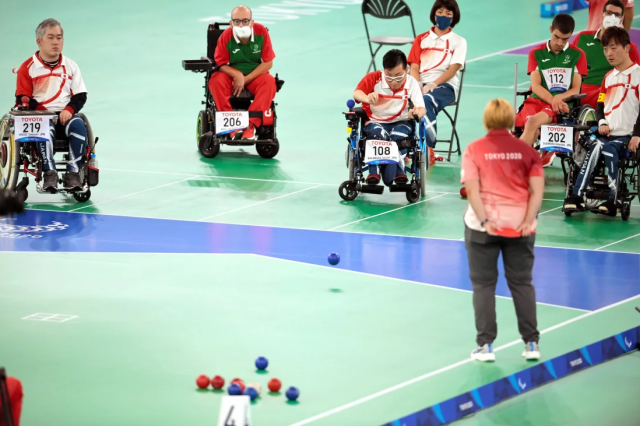Many Paralympic sports have an Olympic counterpart, but only two have no Olympic equivalent. One of them is boccia.
Boccia has been part of the Paralympic Games since 1984, and its popularity has surged rapidly since then. In fact, the International Paralympic Committee (IPC) describes boccia as the “fastest-growing sport within the Paralympic movement” on its official website.
So, what is this sport that has quickly become a fan favorite?
Origins of Boccia
Although boccia made its Paralympic debut in New York in 1984, its origins trace back much further. The word “boccia” comes from Italian and means “to play bowls.” The game shares similarities with both lawn bowling and pétanque.
This family of sports is among the oldest known to humanity. According to World Boccia, the sport’s governing body, depictions of Egyptians throwing stones, which resemble the origins of boccia, date back as far as 5200 B.C.
What began as a leisure activity is now played in over 75 countries worldwide. South Korea holds the record for the most Paralympic boccia gold medals, with a total of 10.
How is Boccia Played?
Boccia is played on a 12.5m x 6m court with two teams competing against each other. The game can be played one-on-one, in pairs, or in teams of three.
One team is assigned six red balls, while the other team receives six blue balls. There is also a single white ball called the “jack.”
At the start of each round—or “end”—a coin toss determines which team will throw the jack and who will have the first throw of their respective colored ball.
The goal is to get as many balls as possible closer to the jack than the opponent’s balls. The distance of a player or team’s balls to the jack decides the winner of the match.
The team farthest from the jack continues to throw until they either surpass the opponent’s position or run out of balls. Players can also strike any ball with their own to gain an advantage.
Individual and pair matches consist of four ends, while team matches consist of six ends.
Classification
Boccia was originally designed for individuals with cerebral palsy. However, the sport has since expanded to include athletes with various eligible disabilities.
Boccia athletes at the Paralympic Games compete in wheelchairs and are classified into one of four categories—BC1 to BC4—based on the level of their impairment.
BC1 and BC3 athletes are allowed an assistant to help them move their wheelchair and perform other commands.
BC1 athletes throw the ball with their hands or feet, and their assistant is allowed to view the court to help move or adjust the competitor’s wheelchair and hand the ball to the athlete when requested. However, the assistant must stay outside the athlete’s playing area at all other times.
BC3 competitors have “severe locomotor dysfunction in all four limbs.” Their “sport assistant” must face away from the court and avoid watching the game during play but is there to help at the athlete’s command between ends without offering advice. Assistants also receive a medal if their athlete wins. BC3 players can use “assistive devices,” such as a ramp, to deliver the ball.
BC2 and BC4 athletes compete independently and are not allowed to receive assistance. BC4 athletes have “severe locomotor dysfunction in all four limbs, as well as poor trunk control” but can “demonstrate enough dexterity to throw the ball onto the court.”
Conclusion
Boccia has grown rapidly within the Paralympic community, capturing the hearts of fans and athletes alike. With its deep historical roots, unique gameplay, and inclusive classification system, boccia stands out as a sport that embodies the spirit of the Paralympic movement.





